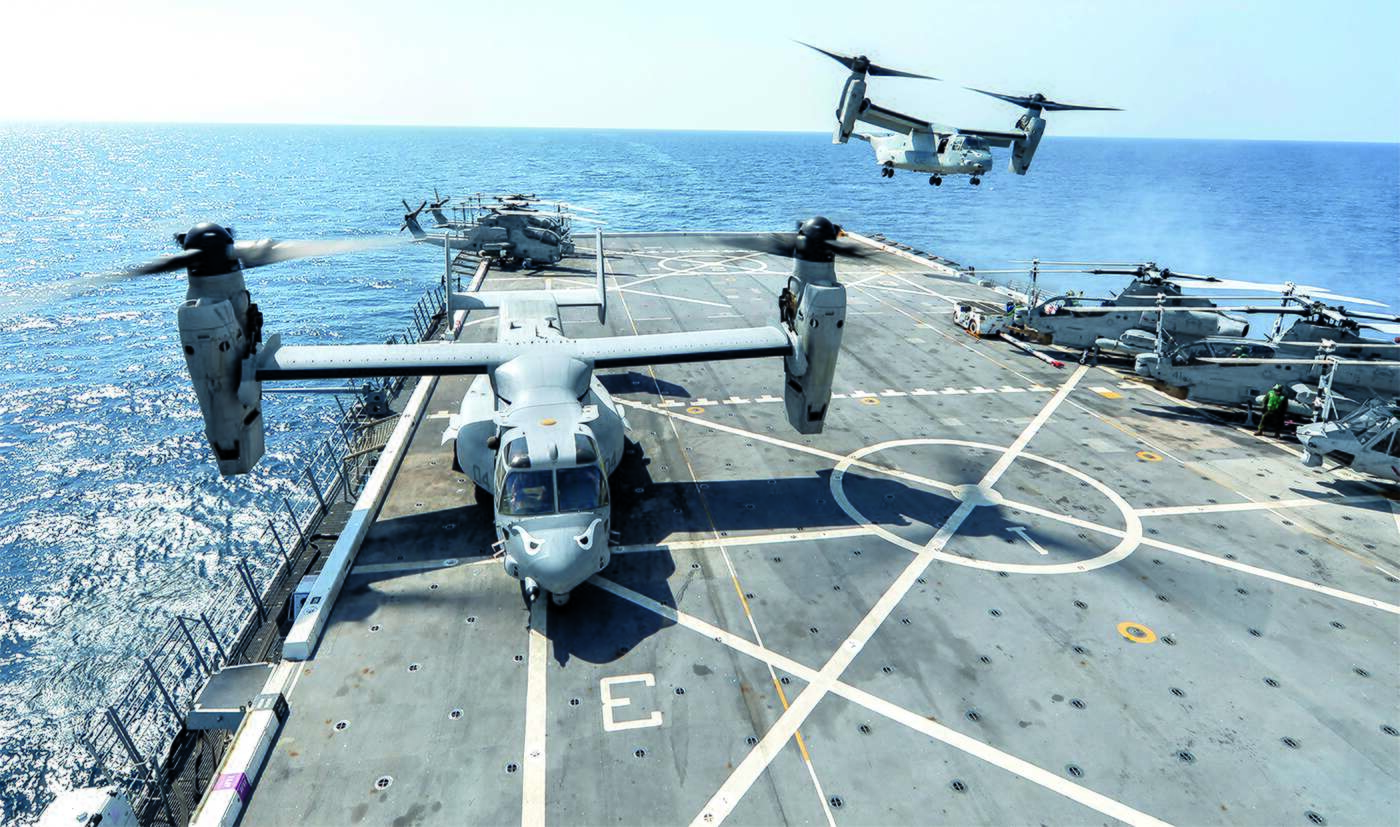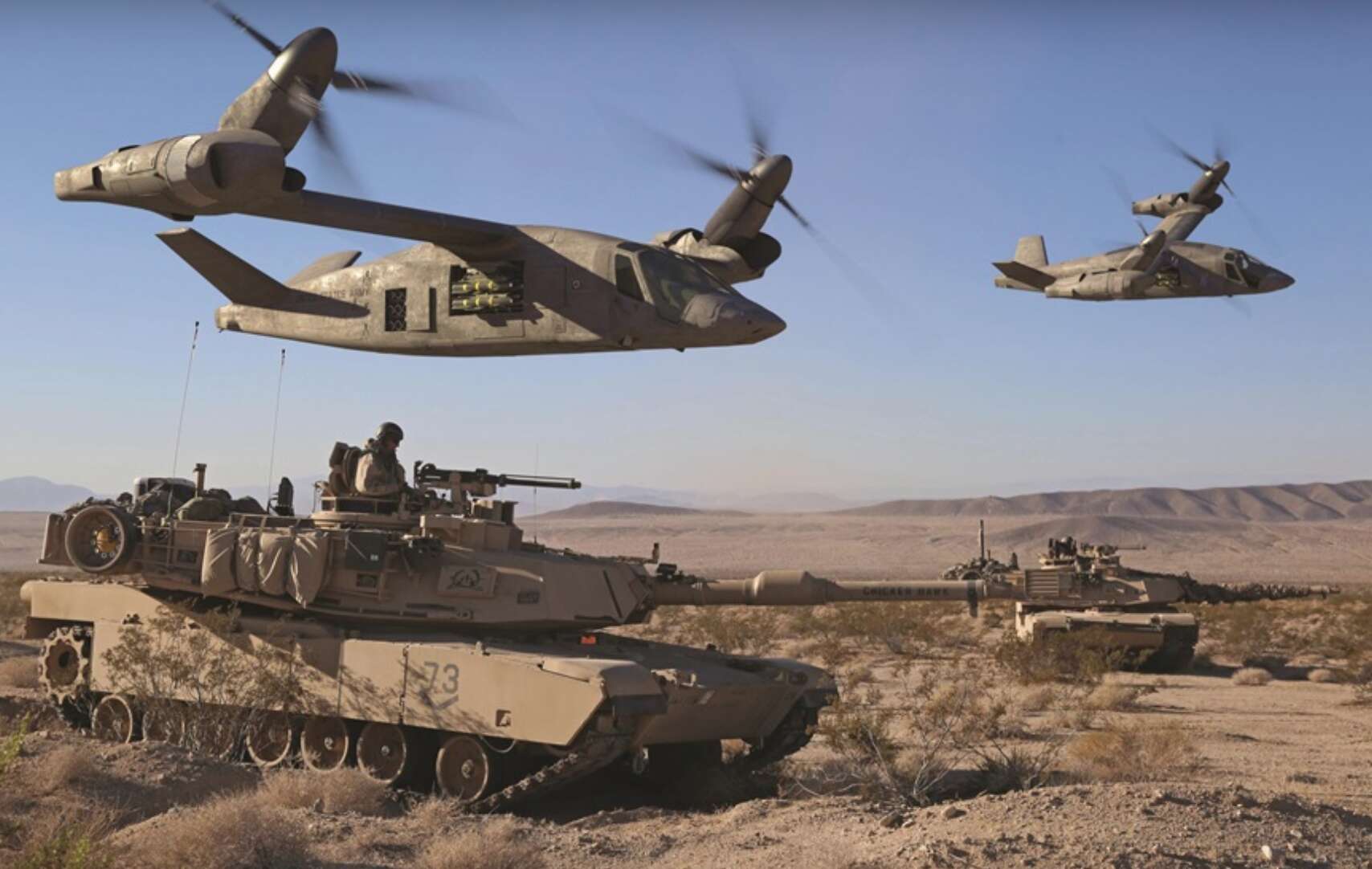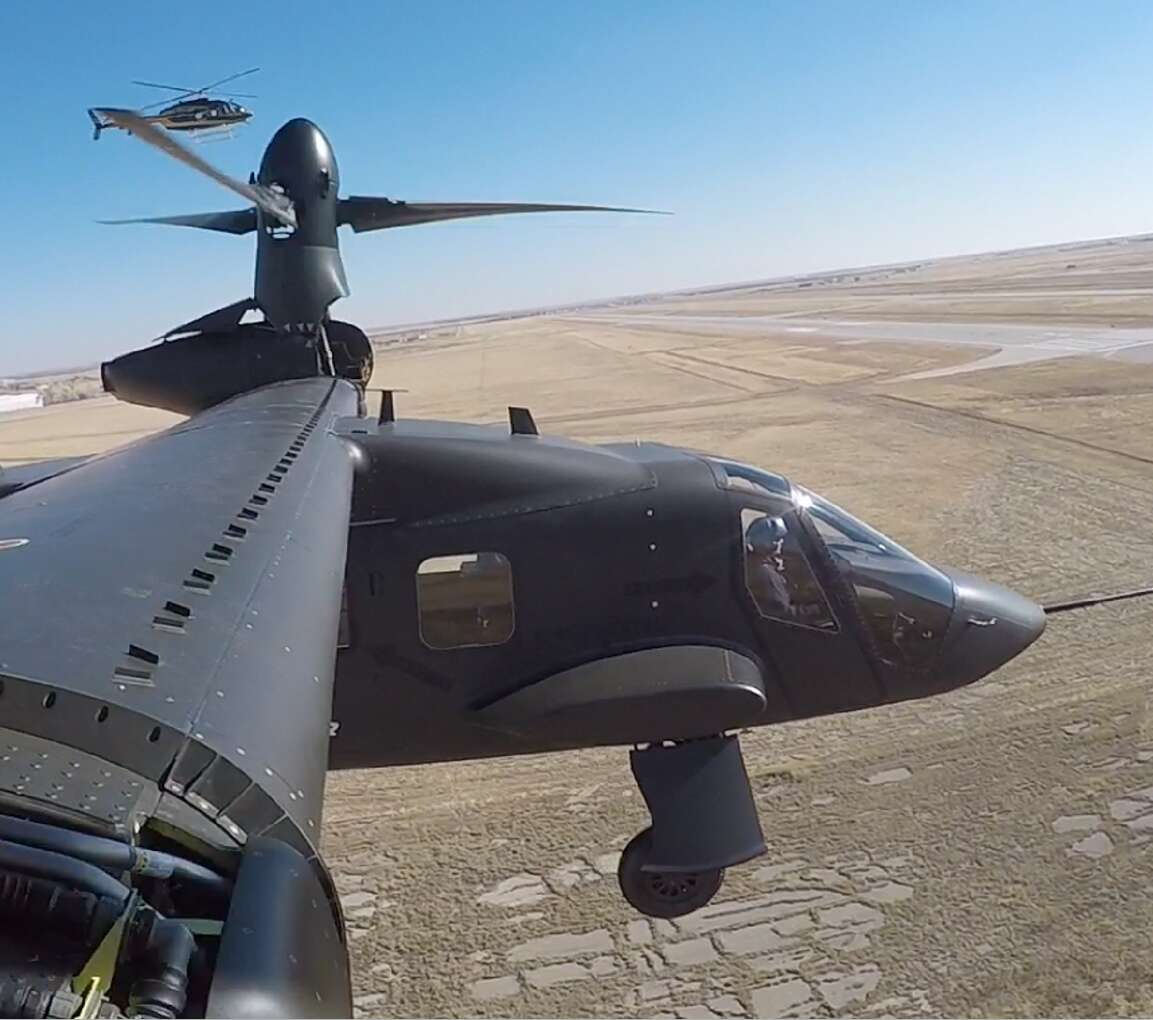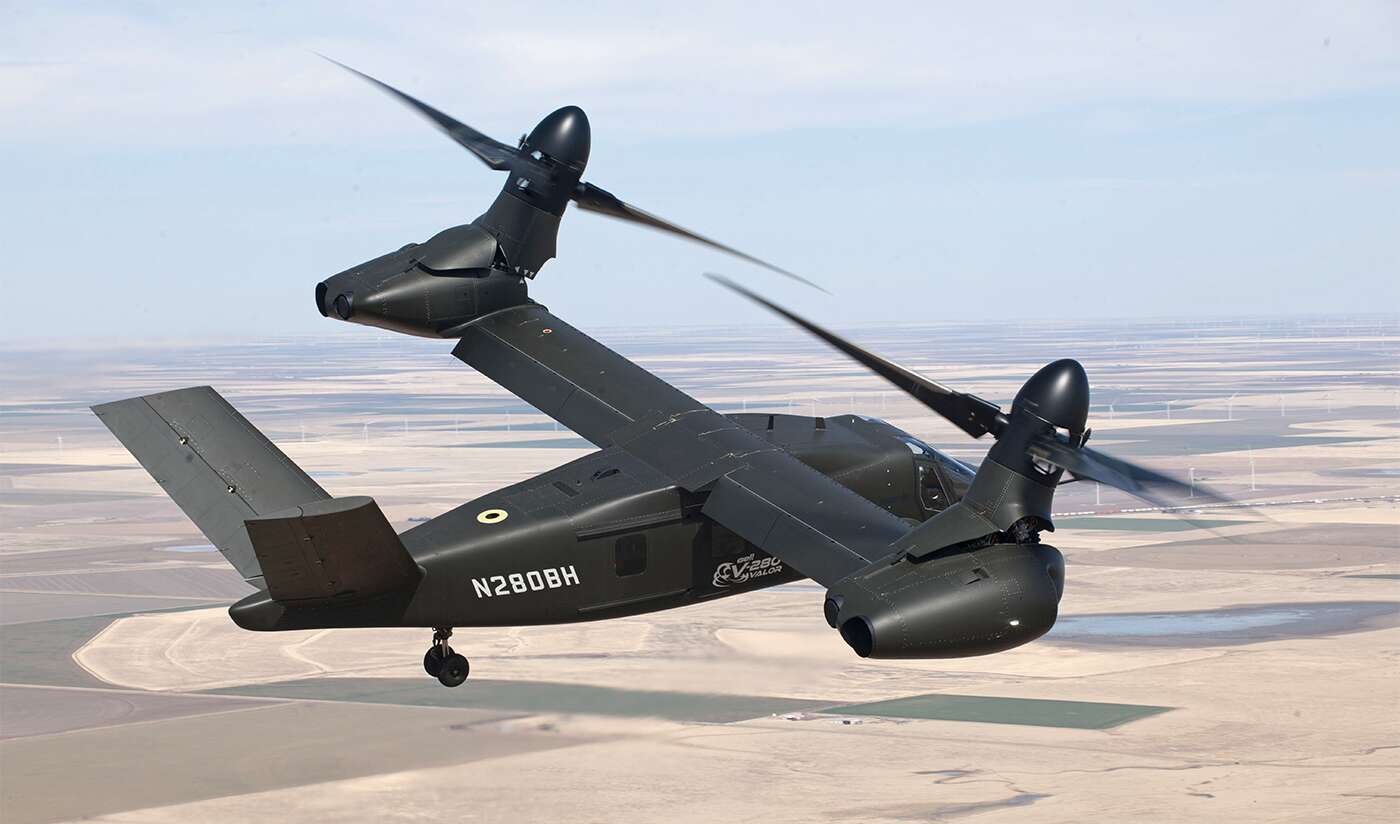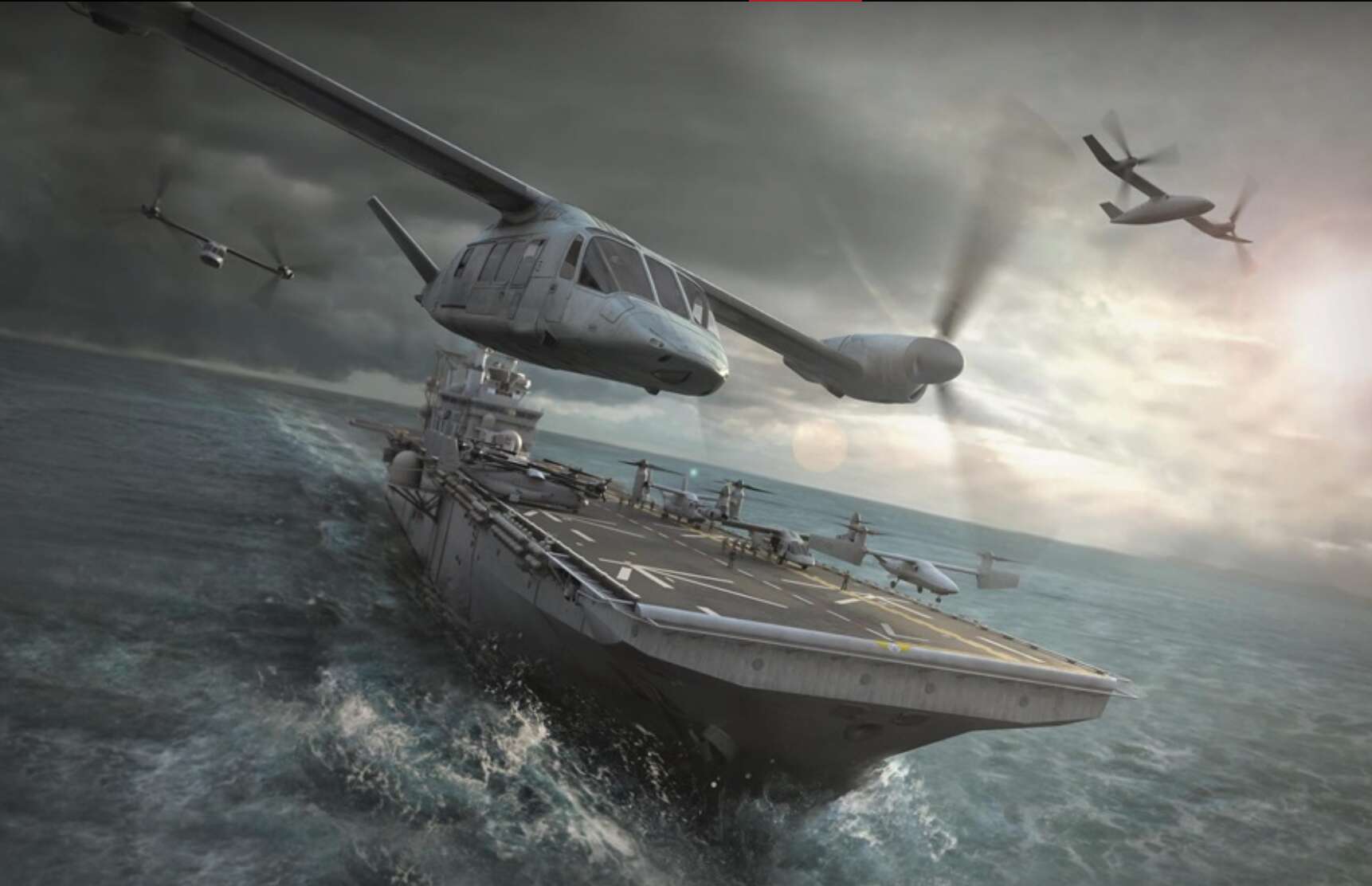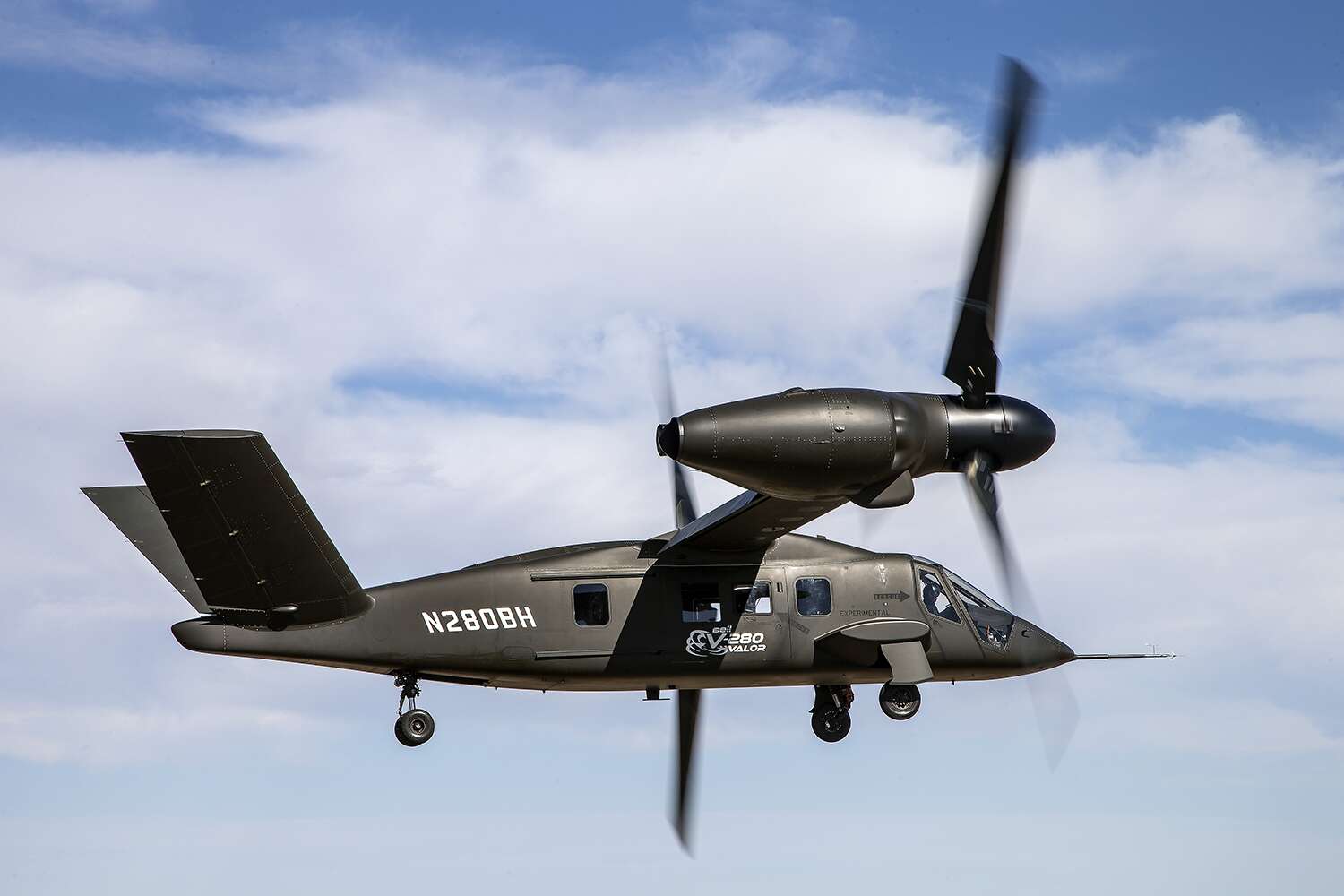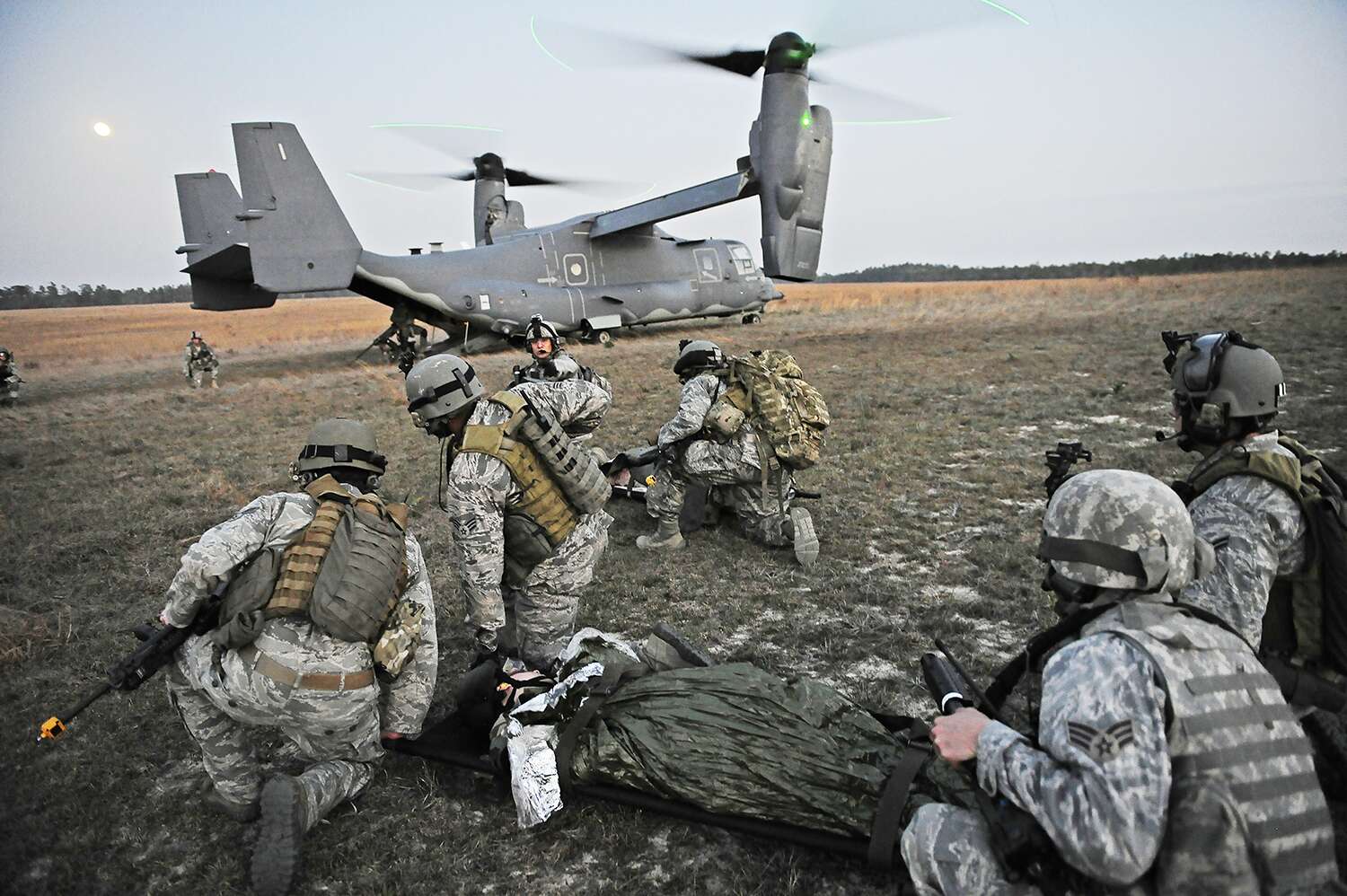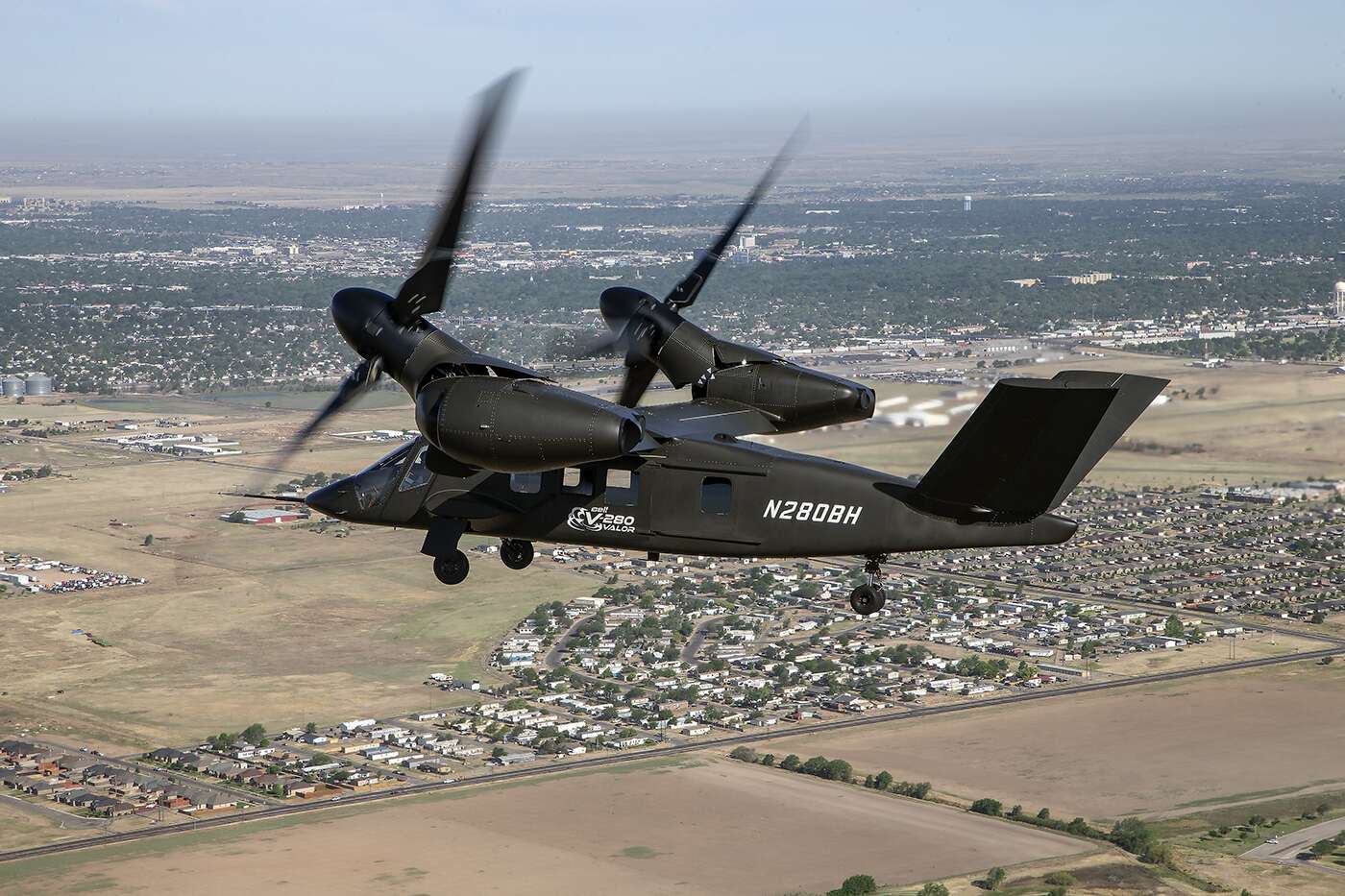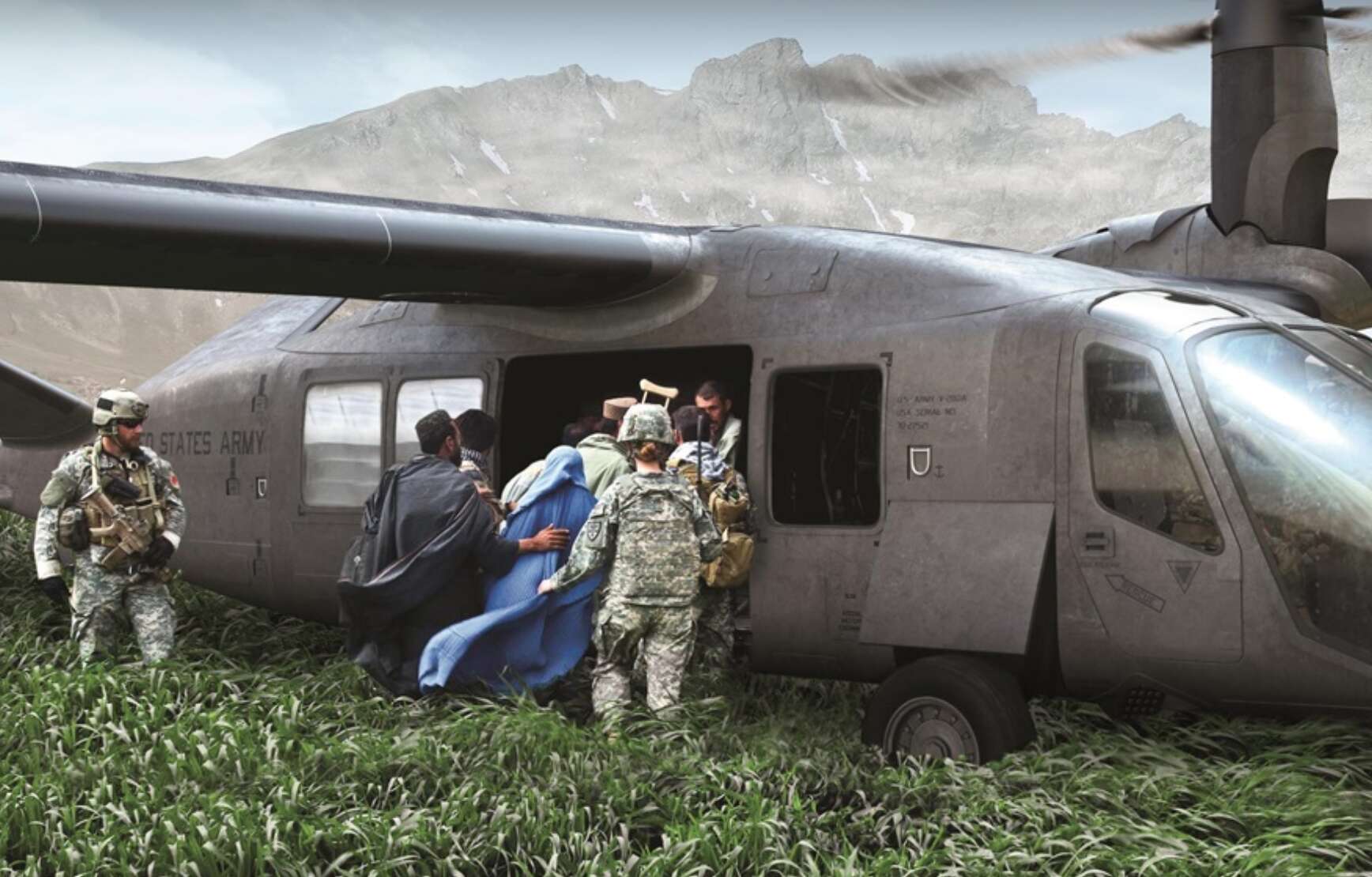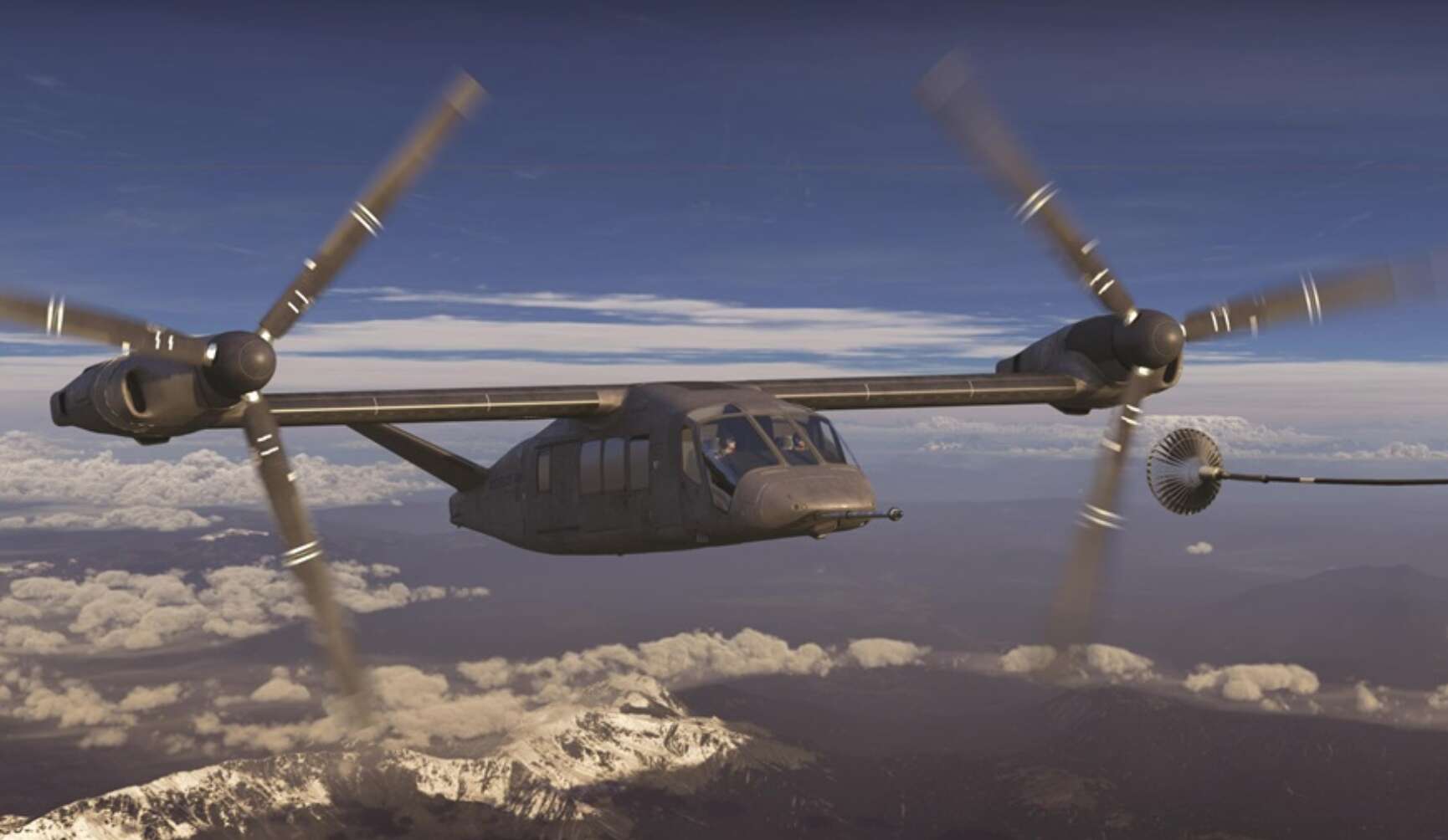There seems to be a lot of questions surrounding Bell’s V-280 Valor, including how it differs from the V-22 Osprey and how the company intends on making the case that its second iteration of tiltrotor technology should replace a large number of H-60 Black Hawk variants, along with other helicopters, to satisfy the Pentagon’s ambitious Future Vertical Lift initiative. The V-280’s primary competition exists in the form of Sikorsky’s SB>1 Defiant coaxial rotor, pusher-compound helicopter.
The V-280 recently transitioned into cruise mode, with its prop-rotors tilted fully forward, for the first time. The company lauds the fact that its prototype is flying and well into its testing regimen. Meanwhile, Sikorsky’s SB>1 still hasn’t taken to the skies after multiple delays. But a smaller derivative of the same technology, the S-97 Raider, has been flying for three years with a second prototype now on hand.
https://youtube.com/watch?v=723vkZxfqSU%3Frel%3D0
Bell was more than willing to field our inquiries, with Keith Flail, Vice President, Advanced Tiltrotor Systems providing us with the company’s official answers. The exchange provides a clearer view of what the Valor was designed to do and how it differs with its established forebearer, the Osprey, and to some extent, its competition. It also gives us an indication of where the design may migrate beyond the Pentagon’s stated needs.
It’s clear that the Future Vertical Lift competition is heating up and the Army says the program cannot be delayed. So without further adieu, here is our exchange with the head honcho of Bell’s tiltrotor division:
Without the shipboard requirement and constraints of the V-22, is the V-280 able to feature a more optimized and efficient tiltrotor design?
“The V-280 is designed to be a multi-service, multi-mission aircraft capable of meeting shipboard compatibility requirements. Those may differ between services. The Army may or may not have a shipboard requirement. However, the USMC will likely require shipboard compatibility and marinization.
The design of the V-280 will lend itself to either requirement. Bell has a proven history of high commonality across multi-mission aircraft with the UH-1Y and AH-1Z. Tiltrotor blade fold, wing stow capability is something we are experienced in as well with the MV, CV, and soon the CMV-22. Folding blades and stowing wings adds to the cost and weight, but may be required for the mission and are features Bell is very experienced with designing and manufacturing.”
Bell certainly has the pedigree when it comes to maritime vertical lift capabilities. This image shows the company’s MV-22s, AH-1Ys, and AH-1Zs packing the deck of a San Antonio class Amphibious Transport Dock.
How does the V-280’s targeted performance stack against to the MV-22’s performance?
“The weight of the V-280 will be less than a V-22. A V-22 is characterized as a medium heavy aircraft with a different mission set than the V-280 in the medium-lift, long-range assault or attack role. The aircraft will have similar speeds and ranges dependent upon the final service requirements. The USMC will likely require the V-280 to have comparable speeds to a V-22 as they field future attack aircraft that will have to provide support to the V-22.”
V-280s in the attack configuration, replete with Hellfire missiles and side-ejecting tube-launched weapons.
In what way are the V-280’s fixed nacelles an improvement over the V-22’s pivoting nacelle configuration?
“The V-280 fixed engine configuration provides both operational and maintainability features across the spectrum of FVL multi-service mission sets. With over 400,000 flight hours and lesson learned applied into the V-280 clean sheet design, we have been able to capitalize on operational and maintainability opportunities.
Our fixed engine configuration allows maintainers the ability to remove an engine, drive shaft or gearbox independent of each other, reducing time required for maintenance procedures, and increasing aircraft availability to the operator. Having a non-rotating nacelle affords troops easy access entering and exiting the side doors and allows the aircraft to deploy self-protection weapons while conducting low-speed flight approaching, departing and in landing zones.”
V-280 Valor
What major differences are there between the interior and cabin features of the MV-22 and the V-280 Valor? How were these differences dictated by the V-280’s targeted mission set?
“The V-22 was designed for a medium/heavy assault support, utility mission. The V-280 was designed as a multi-mission platform, easily reconfigurable for attack or medevac missions. The V-280 was purpose-built for the Army and Marine Corps basic fighting units, the infantry squad. The V-22 is capable of carrying 24 passengers while the V-280 is designed for 12 passengers. This allows expansion to carry squad enablers, medics, interpreters, dog teams, embedded reporter or whatever the mission dictates.
The V-22 has a rear cargo ramp while the V-280 is designed with side doors for rapid ingress and egress of the aircraft. Having large side doors adds a great deal of mission flexibility and the volume of the cabin enables it to be reconfigured for a variety of mission sets.”
The V-22’s larger troop carrying capacity and rear ramp are major differences between it and the V-280.
The MV-22 costs around $70M a copy. A Black Hawk costs a fraction of that price. How will the V-280 be able to replace a large number of H-60s from a fiscal standpoint? Can you share any targeted price projections even if general in nature?
“We designed the V-280 to be manufactured at a comparable cost as an AH-64E (roughly $30M per unit) or Special Operations variant of a H-60. The real benefit is the total value proposition of the tiltrotor platform where the advantages of the improved speed, range, and payload mean that you can accomplish the same missions with fewer aircraft and much less support infrastructure. When you look at the big picture, cost to execute and support the mission, the ability to reduce overall force structure and logistics presents very favorable compounding effects.”
https://youtube.com/watch?v=1O3Onyas984%3Frel%3D0
How different are the two aircraft from a pilot’s and maintainer’s perspective? Are operations similar?
“There are several characteristics of the V-280 already mentioned that will increase maintainer efficiency. Additionally, the aircraft was designed, built and is currently being maintained in a digital environment or what we refer to as the digital thread. This allows the maintainer to view the aircraft technical data in three dimensions. They will receive updates much like your mobile phones or computers today. If there are changes to procedures updates can be pushed to the fleet. As maintenance is performed, there is visibility across the supply chain on repair parts demand and trends.
We are gathering a significant amount of data during flight testing that will start to inform an integrated vehicle monitoring system as well. This reduces the life cycle cost of the aircraft allowing condition-based maintenance and predictability across the supply from manufacturing to the user. Flying the aircraft will be similar with the exception of improved performance in digital flight controls, reduced disk loading, and improved low-speed agility enabled by an increase in the amount of blade flapping designed into the rotor system.”
V-280 Valor
Why would an air arm that doesn’t plan on deploying an aircraft primarily in the shipboard environment buy the V-22 when they can wait and get the Valor?
“Being shipboard capable is really not a discriminator in this discussion. The bottom line is the two aircraft are different in terms of size and designed for different missions. The V-22 was originally designed to perform a ship to shore assault mission. The unique capabilities of the aircraft have expanded the mission sets. The V-22 is an extremely capable medium to heavy lift aircraft while the V-280 was purpose-built to support the medium lift and long-range assault mission in demanding environments. The V-280 was designed around the infantry squad. The basic fighting unit of the Army and Marine Corps.”
Rendering of a ship-borne V-280 derivative.
Some have questioned the larger footprint of the V-280 compared to traditional helicopters like the Black Hawk and how it could adversely impact certain mission sets. What’s Bell’s view on this?
“The V-280 has a slightly larger footprint than the UH-60. However, you get speeds and ranges to fight against near-peer threats with unprecedented operational productivity. You can’t win the fight unless you’re in the fight. As an example, if you put 10 UH-60s on a soccer field for an air assault, you can put 10 V-280s in that same field, but you could execute missions with twice the speed and twice the range.”
V-280 Valor with prop-rotors tilted fully forward for cruise.
Why is the V-280’s tilt-rotor tech superior to the compound pusher coaxial helicopter concept that is being fielded by the competition?
“We can’t speak to the coaxial pusher prop technology or its capability. For long range and high speeds, wing-borne flight is highly efficient. There are also some distinct advantages for survivability and high-speed maneuverability.
Bell tiltrotor technology has proven itself with over 400,000 hours of operational experience and the V-22 being one of the most in demand aircraft for contingency operations around the world. The tiltrotor configuration is mature and this maturity and reliability has allowed the V-280 test team to rapidly enter into flight testing with an advanced air vehicle and actually expand the flight envelope to cruise mode in the five months since first flight.
Bell’s innovative engineers and USMC and USAF operations have proven tiltrotor is the solution to performance requirements to meet warfighters’ future vertical lift requirements.
Speed, range and agility – we don’t make you choose.”
The USAF’s special operations configured CV-22s have been constantly at work in combat zones and rough international neighborhoods around the globe over the last decade.
What military variants does Bell envision for the V-280 concept?
“The V-280 is seen as a multi-service aircraft for Army, USMC, and SOCOM capable of fulfilling multiple missions Assault, Utility, Attack, combat search-and-rescue, and MEDEVAC.”
V-280 Valor
This aircraft seems like it would have many applications outside of Future Vertical Lift, such as search and rescue and even commercial and private applications. Has there been interest in the design outside of the Pentagon?
“There has been a great deal of interest in the commercial applications of tiltrotors. Civil air transport, off-shore energy support and search and rescue. Tiltrotors can solve many of the challenges civil aviation faces today. Decrease in facilities cost and noise, increased efficiency in energy and time.
During a Search and Rescue (SAR) event speed is life. In most SAR events if you need speed and range it takes two aircraft to perform the mission. A fast, longer range fixed wing to search and find, followed by a ship/boat or rotorcraft to rescue. With the V-280 you can increase your search area and time by a factor of two and actually recover personnel. Truly a search and rescue rather than search then rescue.”
V-280 shown in the MEDEVAC role.
What are the biggest technology challenges facing the V-280 program at this time?
“The two biggest goals for the JMR-TD effort were to showcase the revolutionary capabilities of this next generation tiltrotor platform, and to demonstrate life cycle affordability. The team took on challenges in the design and manufacture of the wing, blades, flight controls, and drive system configuration to “bring the proof.”
As with any advanced development, you identify issues along the way, adapt, and overcome. These systems have now been tested not only in flight, but in the lab in production representative tests to include static, fatigue, and endurance tests. This gives us a lot of confidence, and data, to back up the value proposition of our next generation tiltrotor. Right now, the team is focused on flight test and continuing to mature and spiral in new capabilities.”
https://youtube.com/watch?v=a8sE_U5QX5M%3Frel%3D0
Finally, sources often state that the V-280 is stealthy, and it does look futuristic that’s for sure, but were any low-observable elements actually integrated into the design?
“The survivability requirements have not been defined by the Services but we are leaning forward in ensuring we design an aircraft that can get to and win the fight. Speed and range are a part of that. Aircraft survivability will be a combination of active and passive countermeasures to prevent detection and engagement. However, if engaged and hit, the critical components are protected and have triple redundancy. Additionally, the aircraft has several design attributes that increase the survivability of the occupants during a hard-crash sequence as compared to helicopters. The aircraft is single engine capable as well.”
Conceptual art showing a V-280 during aerial refueling. The aircraft will be able to self-deploy across the globe like the V-22.
A special thanks to Bell’s Michael Reilly for facilitating this article.
Contact the author: [email protected]
Source: Read Full Article

